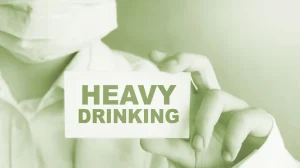Drug Addiction: Definition With Examples and Support

Causes include the desire to enhance performance, achieve weight loss, self-medicate for depression or ADHD, and the increase in dopamine levels leading to feelings of pleasure and satisfaction. The disadvantages of aftercare include the need for continuous commitment, which is challenging to maintain over time. The disadvantages of holistic treatment include the lack of scientific evidence for some holistic methods and potential issues with insurance coverage. According to the 2022 National Survey on Drug Use and Health and the Center for Behavioral Health Statistics and Quality’s 2022 study, 28.8 million adults aged 18 and older (11.2% of this age group) suffered from AUD in 2021.
As therapy
Drug addiction It’s characterized by compulsive substance use despite harmful consequences. While the initial decision to use a substance may be voluntary, repeated use can lead to changes in the brain that impair self-control and hamper the ability to resist cravings, making it a medical condition rather than a mere choice. Stimulant addiction refers to the compulsive use of substances that increase activity in the brain and nervous system, enhancing alertness and energy. Common stimulants include prescription medications such as amphetamines (Adderall, Ritalin) and illicit drugs like cocaine and methamphetamine. As noted in the National Institute on Drug Abuse’s 2020 report, stimulants significantly affect neurotransmitters in the brain, which contributes to the high potential for addiction and abuse. Addressing nicotine addiction requires a multi-pronged treatment approach that includes Nicotine Replacement Therapy (NRT) products like gums, patches, and lozenges, which are commonly used to mitigate withdrawal symptoms and decrease the urge to smoke.
- Drug addiction treatment in New Jersey is necessary for long term sobriety and to prevent relapse.
- Your doctor, your local poison center, or the emergency department of your local hospital may be able to help determine the seriousness of a suspected drug overdose.
- Addiction is characterized by long-lasting changes in brain circuits related to reward, stress, and self-control, making it difficult to abstain without intervention.
- But in the case of an addiction, a person will typically react negatively when they don’t get their “reward.” For example, someone addicted to coffee can experience physical and psychological withdrawal symptoms such as severe headaches and irritability.
Drug Abuse Screening Test (DAST-
It includes an acronym (Car, Relax, Alone, Forget, Friends, Trouble) to remind clinicians of the questions. The Drug Abuse Sreening Test (DAST-10) is widely used in clinical settings to quickly assess the likelihood of drug abuse problems. It helps identify individuals who may benefit from further evaluation or intervention. The questions cover various aspects of substance use, including its impact on social, occupational, psychological, and physical functioning. Benzodiazepine addiction develops through compulsive use of medications like diazepam, lorazepam, and alprazolam, commonly prescribed for anxiety and insomnia. Research shows dependency forms within 2-4 weeks, particularly with high doses or extended use.
- Addiction doesn’t happen from having a lack of willpower or as a result of making bad decisions.
- For questions about medical detoxification, talk with your healthcare provider.
- Of note, acute withdrawal from heavy alcohol use should be done under medical supervision to prevent a potentially deadly withdrawal syndrome known as delirium tremens.
- The advantages of recovery residences include providing a supportive community, fostering accountability, and helping individuals transition back into daily life.
How are addictions diagnosed?
Below are some of the most widely used drug addiction screening tests, along with their definitions, processes, and usages. The treatment of marijuana addiction typically involves behavioral therapies, as there are no FDA-approved medications for its treatment. Cognitive-behavioral therapy (CBT), motivational enhancement therapy (MET), and support groups are effective in managing withdrawal symptoms and reducing cannabis use. The Substance Abuse and Mental Health Services Administration (SAMHSA, 2023) underscores the importance of tailored treatment plans that address both psychological and behavioral aspects of addiction. The use of stimulants leads to severe psychological and physical health issues. Psychologically, it causes paranoia, increased aggression, and, in some cases, severe mental health disorders like psychosis.

This includes alcohol use disorder (AUD), which affects 14.5 million Americans aged 12 and older, leading to severe health risks, according to the Substance Abuse and Mental Health Services Administration (SAMHSA). Nicotine addiction, despite a decline in smoking rates, still impacts 12.5% of U.S. adults as of 2020. Inhalant addiction refers to the misuse of substances like paint thinners, nitrous oxide, and glue for their psychoactive effects. Inhalants provide short-lived highs but can lead to severe brain damage and other health issues.

What Is The Difference Between Behavioral Addictions And Drug Addictions?
Though it’s a treatable illness, substance use disorder recovery https://ecosoberhouse.com/ often involves a lifelong cycle of relapse (recurrence of use), withdrawal, and abstinence. Detox helps manage withdrawal symptoms and reduces the risk of complications through medications, hydration therapy, and medical monitoring. It is important for individuals with severe substance dependence, as sudden cessation leads to life-threatening withdrawal symptoms. While genetics increase susceptibility, environmental and psychological factors also play important roles in addiction development.
- Over time, these drugs alter brain chemistry and circuitry, leading to dependency and addiction.
- For others, particularly with opioids, drug addiction begins when they take prescribed medicines or receive them from others who have prescriptions.
- Your provider will ask you (and possibly your loved ones) questions about your patterns of substance use or problematic behaviors.
State House Brief: Lawmakers to Square Off Over $120M Spending Bill & Potential Censure Votes Amid National Firestorm
When a person has addiction and stops taking the substance or engaging in the behavior, they may experience certain symptoms. what is drug addiction Someone with addiction will continue to misuse the substance or activity in spite of the harmful effects it has. For example, a person who drinks alcohol heavily on a night out may experience both the euphoric and harmful effects of the substance. Addiction is not just about a substance or habit; it is about compulsive behavior—an urge that overrides one’s conscious wishes. Zen Buddhism teaches that the present moment is all there is, and that to truly live, one must be present. By this logic, any attempt to escape the present moment could be seen a form of addiction.


Designing research-based prevention programs to meet the specific needs of children by age and specific community strengths and challenges contributes to the success of those programs. The prevalence of easier access to technology led to the development of computer-based prevention programs. Such programs are very promising in how they compare to more traditional prevention programs, as well as how many more people can be alcoholism treatment reached through technology. Similar to many mental health diagnoses, there is no one test that definitively determines that someone has a chemical use disorder. Therefore, health care professionals diagnose these conditions by thoroughly gathering medical, family, and mental health information. The practitioner will also either conduct a physical examination or ask that the person’s primary care doctor perform one.

No Comments